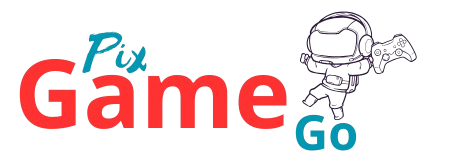How to Make Your Own Roblox Game – Step-by-Step Guide
Introduction
Roblox is one of the most popular online gaming platforms, allowing players to create and share their own games. Whether you want to build an adventure, a simulator, or a tycoon game, Roblox Studio provides all the tools needed for game development. This guide will walk you through the entire process, from setting up Roblox Studio to publishing your first game.
1. Getting Started with Roblox Studio
What is Roblox Studio?
Roblox Studio is the official game development tool for Roblox. It offers a variety of tools and features to help you design and script your own game. With a user-friendly interface and a powerful scripting engine, it’s perfect for both beginners and experienced developers.
How to Download & Install Roblox Studio
To start developing your game, follow these steps:
- Go to the Roblox Studio website.
- Click on Start Creating and download the installer.
- Run the installer and log in with your Roblox account.
- Once installed, launch Roblox Studio to begin creating.
Understanding the Roblox Studio Interface
Roblox Studio has several important panels:
- Explorer: Shows the hierarchy of objects in your game.
- Properties: Displays attributes of selected objects.
- Toolbox: Contains assets like models, scripts, and sounds.
- Viewport: The main workspace where you build your game.
Basic Controls & Features
- Move, Rotate, Scale: Manipulate objects in the game world.
- Anchoring & Grouping: Keep objects in place and organize elements.
- Collisions & Physics: Define how objects interact in the game.
2. Designing Your First Roblox Game
Choosing a Game Type
Before building, decide on a game type. Some popular ideas include:
- Obby (Obstacle Course): A fun jumping challenge.
- Simulator: Players perform actions to earn points.
- Tycoon: Players build businesses to earn money.
- RPG (Role-Playing Game): A story-driven adventure.
Building the Game World
- Use terrain tools to create mountains, rivers, and landscapes.
- Add buildings, obstacles, and decorative objects to enhance the experience.
- Apply lighting effects to set the mood of the game.
Adding Characters & NPCs
- Use default Roblox avatars or create custom characters.
- Add NPCs (non-playable characters) with AI interactions.
Setting Up Game Physics
- Enable gravity and collision effects.
- Adjust object properties like mass, friction, and elasticity.
- Use physics constraints to create realistic movements.
3. Introduction to Roblox Scripting (Using Lua)
What is Lua & Why Use It?
Lua is the scripting language used in Roblox. It helps developers add functionality like movement, interactions, and game logic.
Adding Your First Script
- Open Roblox Studio and insert a Script into an object.
- Write a simple Lua script:
print("Hello, Roblox!") - Run the game to see the output in the Console.
Basic Scripting Examples
- Make an object disappear when touched:
script.Parent.Touched:Connect(function() script.Parent:Destroy() end) - Create a simple leaderboard:
local Players = game:GetService("Players") Players.PlayerAdded:Connect(function(player) local leaderstats = Instance.new("Folder") leaderstats.Name = "leaderstats" leaderstats.Parent = player end)
Debugging & Testing Scripts
- Use Output Window to find script errors.
- Test interactions using Play Mode in Roblox Studio.
- Break down complex scripts into smaller functions.
4. Publishing & Monetizing Your Roblox Game
How to Publish Your Game
Once your game is complete, publish it to Roblox:
- Click File > Publish to Roblox As.
- Enter a game name, description, and genre.
- Click Create to make it live for other players.
Testing Before Launch
- Use Play Mode to check for bugs.
- Get feedback from friends or other developers.
- Optimize game performance for smooth gameplay.
Monetization Methods
- Game Passes: Sell special abilities or items.
- Developer Products: Allow in-game purchases.
- Ads & Sponsorships: Promote your game on the Roblox Marketplace.
Marketing Your Game
- Share your game on social media & Roblox forums.
- Join the Roblox Developer Community to network with other creators.
- Update your game regularly to keep players engaged.
5. Advanced Features & Future Improvements
Using Plugins & Advanced Tools
- Install Roblox Studio plugins to speed up development.
- Use Building Tools by F3X for better object manipulation.
- Try Rojo for integrating external code editors.
Adding Leaderboards & Datastores
- Use leaderboards to track high scores.
- Implement Datastores to save player progress:
local DataStoreService = game:GetService("DataStoreService") local playerStats = DataStoreService:GetDataStore("PlayerStats")
Integrating Roblox API
- Use APIs to access game data and analytics.
- Customize game interactions with RemoteEvents.
Keeping Your Game Updated
- Regularly add new content, bug fixes, and features.
- Monitor player feedback and adjust difficulty levels.
- Use analytics tools to track player engagement.
Conclusion
Creating a Roblox game is an exciting journey that allows for creativity and potential earnings. Whether you’re making a simple obby or a complex RPG, following this guide will help you get started.
Now it’s your turn! Start building your game today and let us know in the comments what you’re working on. If you found this guide helpful, share it with your fellow developers!
Happy game developing! 🎮🚀

